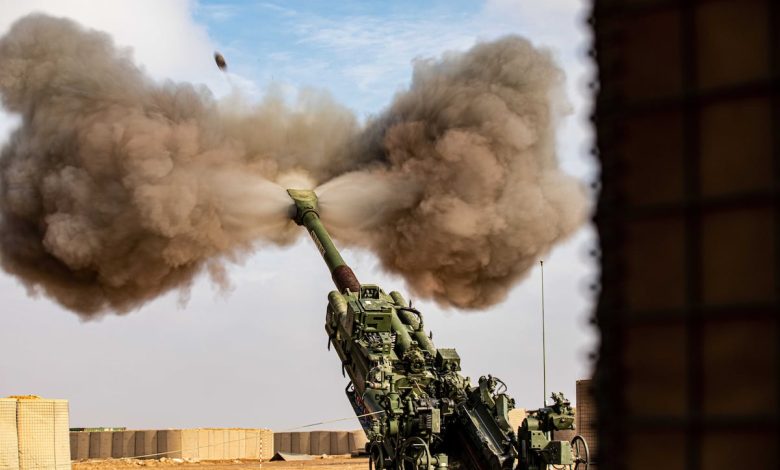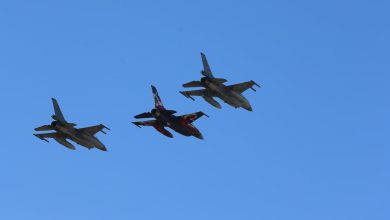US Army wants to manufacture 30,000 155mm cluster shells per year

The U.S. Army is looking for companies that can manufacture the new XM1208 155mm cluster shell — and a number of them.
The goal, according to a market survey published Nov. 20, is to find contractors who can manufacture up to 30,000 XM1208 rounds per year.
The U.S. is currently producing 40,000 artillery shells per month, as America and Europe struggle to ramp up production of howitzer munitions in response to the war in Ukraine.
The Nov. 20 market survey, meanwhile, noted that the XM1208 can be produced by multiple manufacturers.
“Sources shall include their minimum sustaining and maximum capacity rates,” the Army said.
The XM1208, which carries nine M99 Advanced Submunitions, is designed to be fired from both the M109A6/7 Paladin and M777A2 howitzers. It can be fired out to a maximum range of approximately 14 miles, according to a 2025 Joint Program Executive Office Armaments and Ammunition brochure.
“The ASMs are expelled at a predetermined time in flight using M762/A1 [electronic time] fuze,” the brochure stated. “They are armed while falling, oriented via a ribbon stabilizer, and deliver around 1,200 preformed tungsten fragments approximately 1.5 meters above the target area.”
If the proximity fuze on a submunition fails, there are four back-ups: point detonation upon impact, pyrotechnic and two electronic fuses.
Detonation — or the lack of it — is the impetus behind next-generation cluster shells like the XM1208.
The Army is trying to reconcile two design goals: artillery shells that can launch multiple submunitions, but do so without violating international treaties that ban cluster weapons.
Cluster weapons, which date back to Nazi Luftwaffe bombs in World War II, target the laws of probability. Using a single bomb to dispense a large number of small bomblets increases the chances of a hit, especially for area fire where targets can’t be precisely located.
Facing potential attack by massed Soviet forces, the Army’s solution starting in the 1970s was the Dual-Purpose Improved Conventional Munition, or DPICM. These contained numerous grenade-sized anti-tank and anti-personnel submunitions, ranging from 72 bomblets in the M864 155mm howitzer shell, to 644 submunitions in the M26 rocket fired by the M270 Multiple Launch Rocket System.
The problem with those munitions was that the bomblets had a dud rate that ranged between 2% and 14%. (For Russian cluster weapons, that figure is 40%.) That meant battlefields could become littered with small unexploded bombs that can kill civilians long after the fighting has ended.
In 2008, the Department of Defense mandated that cluster munitions must have a dud rate no greater than 1%, though that policy was reversed in 2017.
The Army now plans to replace DPICM with the Cannon-Delivered Area Effects Munition, or C-DAEM. The program includes the XM1180 shell to dispense anti-armor bomblets, and the XM1208 to release submunitions against personnel and light vehicles.
Objectives “include delivering enhanced lethality against a broad range of uncertain targets, extending the range and effectiveness against counter-artillery fire, and providing a reliable solution that can operate in GPS-contested environments while mitigating the risk of harm from [unexploded ordnance],” the Army announced after a successful test of the XM1180 in March 2024.
Despite the bad press for DPICM, the Army is likely to keep it around even as next-generation cluster weapons are fielded.
“The military has consistently stated that DPICM is effective and should be retained in inventory for emergency use,” Mark Cancian, a researcher at the Center for Strategic and International Studies, told Defense News. “That is unlikely to change because it is a judgment based on testing data and operational experience.
“The key problem with ICM is getting the dud rate under 1% at an acceptable fiscal and weight cost,” Cancian added. “Previous attempts had reduced the dud rate but not below 1%, so the Army’s effort continues.”
Michael Peck is a correspondent for Defense News and a columnist for the Center for European Policy Analysis. He holds an M.A. in political science from Rutgers University. Find him on X at @Mipeck1. His email is [email protected].







